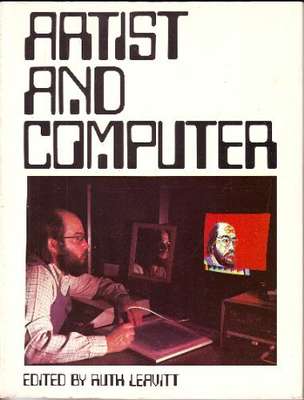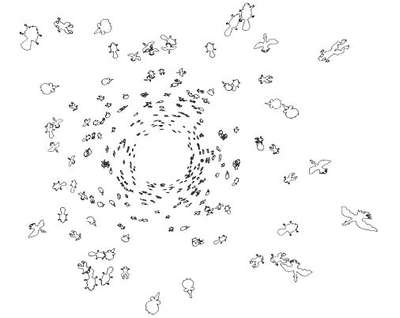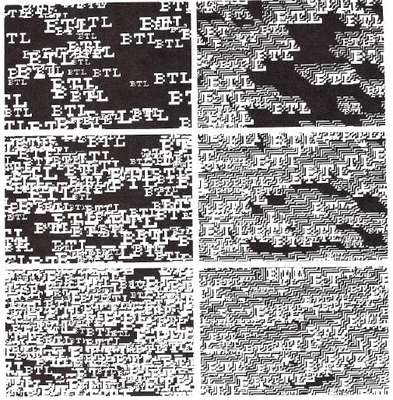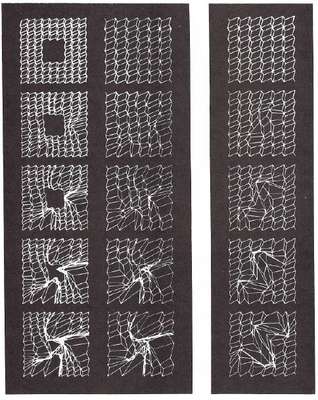


| title: | Artist and Computer |
| year: | 1976 |
EXCERPT FROM THE PREFACE
“Different artists use the machine in different ways to produce different types of art. Edward Ihnatowicz is deeply interested in artificial intelligence and uses this approach in creating cybernetic sculpture. Aaron Marcus’ work shows his interest in concrete poetry. He creates picture environments and his poem drawings give new meaning and depth to words. Duane Palyka uses a color television monitor attached to a computer system and paints pictures in an unprecedented manner. The Bangerts’ drawings appear hand-made. Aldo Giorgini’s moiré patterns have the look of optical art. Each takes advantage of different features offered by the computer.
I have been lecturing to groups of adults and students in the last few years, both on my own work and on computer art in general. These groups have included students of art, art history, computer science, futuristics, etc. I found that, irrespective of background, questions concerning motivation were repeatedly asked. I had been thinking about the answers to these questions for some time. When Dave Ahl asked me to put together a special edition of Creative Computing magazine devoted to computer art, I felt that this would be an ideal opportunity to discover how other computer artists would respond to these questions. I was curious to see if they shared my feelings. Since previous books on computer art had only documented the state of the art, I felt that now it would be interesting to have the artists discuss their art with regard to these questions:
- How/why did you become involved with the computer (in producing art)?
- What is your art background?
- What role does the computer play for you … simulation, tool, etc.? What is your role?
- Are your computer works related to non-computer art?
- Do you have a final image in mind when work begins?
- Could your work be done without the aid of a computer? If yes, why use the computer?
- To what extent are you involved in the technical production of your work, for example, in programming?
- Do you feel art work created with a computer has now or will have an impact on art as a whole in the future?
- Do you intend to continue using the computer to create art pieces?
- Do you recommend the use of the computer for others in creating works of art?
Some of the authors address the questions in their articles; some do not. Many of the papers are purely statements about the artist’s work. Just as the artists’ artwork differs, so do their papers. It is important for artists to be able to discuss their work in their own words. Therefore, the papers in this book are presented with a minimum of editing.
I am grateful to all who submitted manuscripts for this book. Each contribution helps clarify the relationship between artist and computer."
Ruth Leavitt
Minneapolis, Minnesota
February 1976






